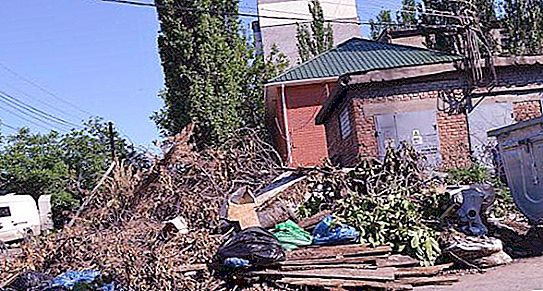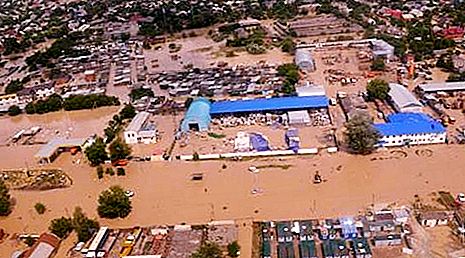About 75% of the surface of the globe is covered by sedimentary rocks. This category includes more than half of the minerals mined from the bowels of the planet. They are mainly concentrated on the continents, shelf and continental slope, and only about 15% are at the bottom of the oceans.
Sedimentary rocks are formed during the redeposition of weathering products and the deposition of substances mainly in the aquatic environment (less often on land), as well as in the process of glaciers. Precipitation can occur in different ways. Depending on its nature, different groups of sedimentary rocks are distinguished:
- clastic - are the result of mainly physical weathering, subsequent transfer and redeposition of the material;
- colloidal-sedimentary - are formed as a result of chemical decomposition, accompanied by the formation of colloidal solutions;
- chemogenic - are formed during precipitation from aqueous solutions as a result of chemical reactions or caused by various reasons for the supersaturation of solutions;
- biochemical - the result of chemical reactions involving living organisms;
- biogenic, or organogenic - the result of the vital activity of organisms.
Combining features of different groups of sedimentary rocks are often found. The classification above refers them to any one group. For example, limestone, which may have clastic, organogenic, chemogenic or biochemical origin, belongs to biochemical rocks.
In chemical composition, sedimentary rocks differ from igneous rocks in a large number of rock-forming components and much higher differentiation. This is explained by the fact that the material for their formation is the weathering products of metamorphic, igneous and more ancient sedimentary rocks, as well as gases and mineral components dissolved in natural waters, the products of vital activity of organisms, products of volcanic eruptions and even fragments of meteorites (for example, nickel iron balls) In addition, they often contain traces of a long-vanished life - fossil flora and fauna. As a rule, the age of such fossils is equal to the age of the rocks themselves, but there are also older, redeposited organic remains.
Some rocks (diatomites, nummulite and bryozoan limestones, and others) are entirely composed of organisms (biomorphic) or their fragments (detritus). In biomorphic (whole-shell) structures, fossils are located in isolation from each other, bound by cement (brachiopod shells) or grow on top of each other, forming growth textures (coral or bryozoic limestone). Detritus structures are formed in shallow water under the influence of shell-destroying unrest or as a result of the activity of predators, crushing shells for food.
Sedimentary rocks are formed as follows: when the parent rocks are destroyed, the initial substance is formed, which is transported by water, wind or glaciers, and then deposited on the land surface and at the bottom of water basins. As a result, a precipitate consisting of heterogeneous components is formed, fully or partially saturated with water and having a loose and porous structure. This sediment, modified over time, is sedimentary rock.
The process of sedimentation occurs under the influence of climate and tectonic regime. In humid (warm and humid) climates, siltstones, clays, diatomites, caustobiolites (combustible minerals) are formed. Arid (arid) zones are characterized by limestone, gypsum, anhydrite, and rock salt. Powerful layers of sedimentary rocks accumulate in folded areas, which are characterized by such features as spatial variability and the variegated composition of clastic material. On the platforms, on the contrary, there are beds of rocks of low power with a more uniform composition of clastic material.
Due to the fact that sedimentation conditions in past geological epochs were close to modern or similar to them, based on data on the nature of the distribution of sedimentary rocks on the earth's surface, it is possible to recreate the paleotectonic and paleogeographic situation on the planet.





